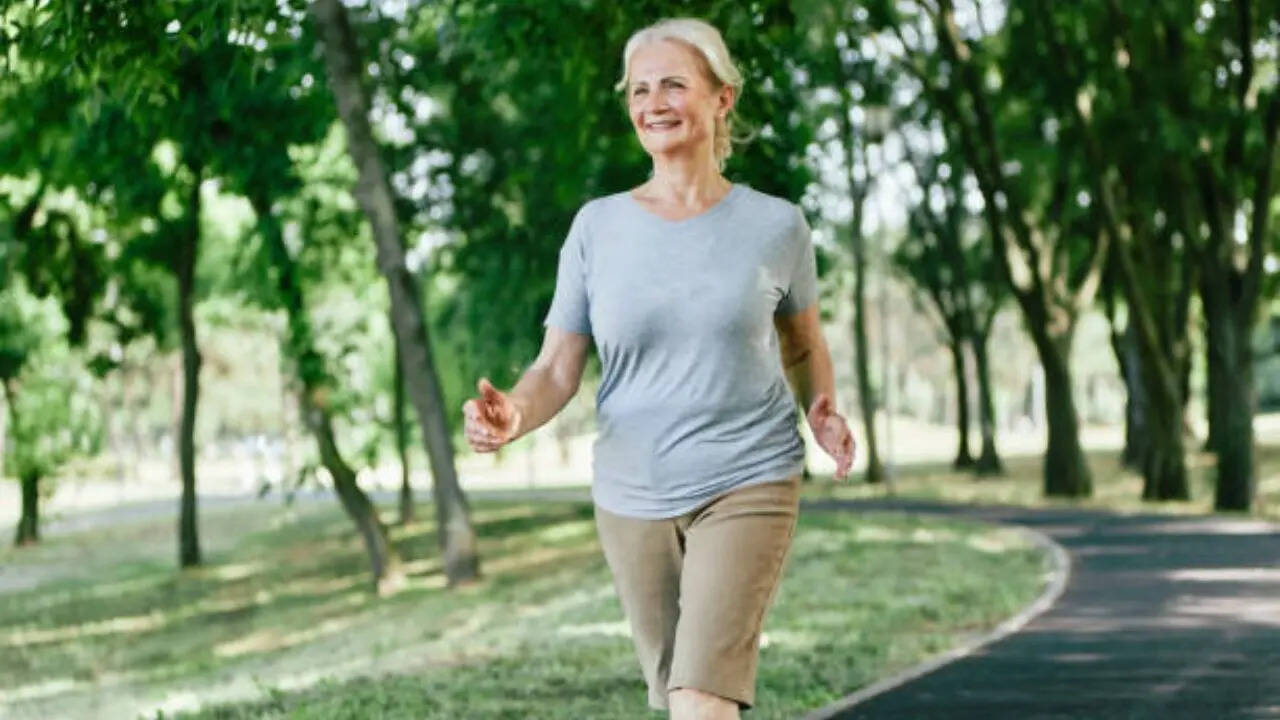Health
Minor Walking Adjustments Can Significantly Alleviate Knee Pain

Knee osteoarthritis, a condition that often leads to significant pain and mobility issues, may be managed more effectively through small changes in walking technique. A recent study conducted by researchers from NYU Langone Health, the University of Utah, and Stanford University revealed that subtle adjustments in foot positioning can reduce knee pain associated with this degenerative joint disease.
The findings, published in the journal The Lancet Rheumatology, suggest that altering the angle of the foot while walking can slow cartilage degeneration and alleviate discomfort. The study involved approximately 70 participants diagnosed with mild to moderate knee osteoarthritis, who underwent advanced MRI scans to evaluate the effectiveness of the technique.
Researchers discovered that individuals trained to angle their feet slightly either inward or outward experienced a slower rate of cartilage wear in the inner knee, compared to those encouraged to walk without modifying their foot placement. Dr. Valentina Mazzoli, a co-lead author of the study, emphasized the significance of these results, stating, “Although our results will have to be confirmed in future studies, they raise the possibility that the new, non-invasive treatment could help delay surgery.”
Those who adjusted their foot angle reported a reduction in their pain score by 2.5 points on a 10-point scale, while participants who did not change their gait only experienced a marginal decrease of just over one point. Dr. Mazzoli highlighted that finding an optimal foot angle to minimize knee stress could provide a simple and cost-effective solution for managing early-stage osteoarthritis.
Study Methodology and Results
Participants in the study walked on a treadmill within a specialized gait-assessment laboratory. A computer program analyzed their walking patterns to determine the maximum loading on the inner side of their knees. Subsequently, researchers generated a model that explored four new foot positions—angled inward or outward by either 5 or 10 degrees—to identify which alignment resulted in the least knee loading. The results indicated that those who modified their gait reduced maximum knee loading by at least 4 percent.
Osteoarthritis is characterized by the gradual deterioration of cartilage that cushions the joints, leading to pain, stiffness, and decreased mobility. As the cartilage wears away, bones may begin to rub against each other, resulting in discomfort. This condition is a leading cause of disability and is typically managed through pain relievers, physical therapy, and, in severe cases, knee replacement surgery.
Understanding Osteoarthritis
Common symptoms of osteoarthritis include joint pain during movement, stiffness, swelling, reduced range of motion, and a feeling of instability in the joint. Affected individuals may notice visible changes in the joint’s appearance over time.
Experts assert that excessive loading on the joints can contribute to the progression of osteoarthritis. By implementing simple gait adjustments, patients may not only alleviate their immediate pain but also potentially slow the disease’s advancement, reducing the need for more invasive interventions in the future.
As research continues, the focus will remain on confirming these initial findings and exploring how these slight variations in walking techniques can be integrated into routine care for individuals suffering from knee osteoarthritis.
-

 World5 months ago
World5 months agoSBI Announces QIP Floor Price at ₹811.05 Per Share
-

 Lifestyle5 months ago
Lifestyle5 months agoCept Unveils ₹3.1 Crore Urban Mobility Plan for Sustainable Growth
-

 Science4 months ago
Science4 months agoNew Blood Group Discovered in South Indian Woman at Rotary Centre
-

 World5 months ago
World5 months agoTorrential Rains Cause Flash Flooding in New York and New Jersey
-

 Top Stories5 months ago
Top Stories5 months agoKonkani Cultural Organisation to Host Pearl Jubilee in Abu Dhabi
-

 Sports4 months ago
Sports4 months agoBroad Advocates for Bowling Change Ahead of Final Test Against India
-

 Science5 months ago
Science5 months agoNothing Headphone 1 Review: A Bold Contender in Audio Design
-

 Top Stories5 months ago
Top Stories5 months agoAir India Crash Investigation Highlights Boeing Fuel Switch Concerns
-

 Business5 months ago
Business5 months agoIndian Stock Market Rebounds: Sensex and Nifty Rise After Four-Day Decline
-

 Sports4 months ago
Sports4 months agoCristian Totti Retires at 19: Pressure of Fame Takes Toll
-

 Politics5 months ago
Politics5 months agoAbandoned Doberman Finds New Home After Journey to Prague
-

 Top Stories5 months ago
Top Stories5 months agoPatna Bank Manager Abhishek Varun Found Dead in Well









